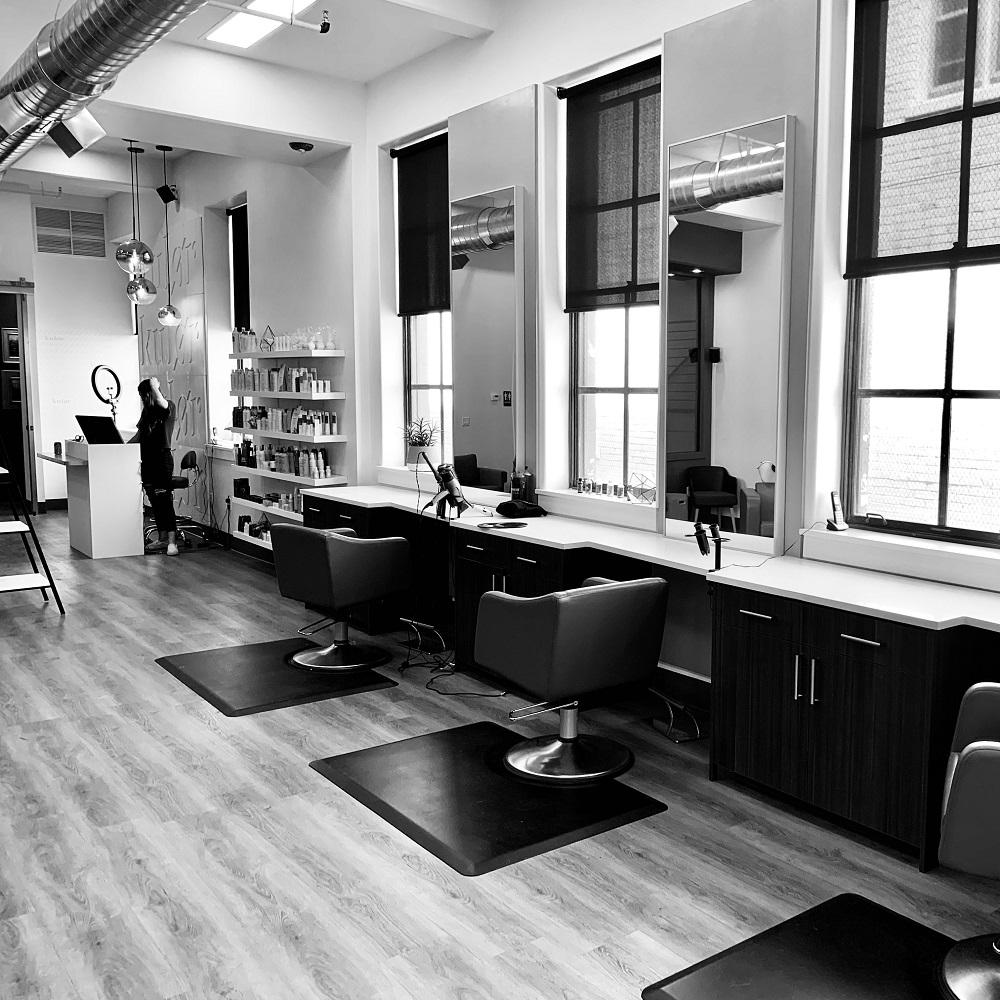The 3 keys to regular revenue growth for every salon and spa
What does it take for today’s salons, spas, and medspas to grow their revenue? The right tools to optimize appointment books and maximize per-hour earnings.

Beauty and wellness quiz: You’re looking to boost revenue at your salon, spa, or medical spa. Which is most important?
- Optimizing the number of available appointment slots in your schedule.
- Filling as many available slots as possible each day.
- Maximizing the revenue for each slot.
Answer: All of the above.
It doesn’t matter if your business has one location or an entire franchise – the ability to grow revenue still comes down to one store, one schedule, and one customer at a time.
Sounds like a daunting task, but it doesn’t have to be. Intelligent software can optimize all three components of the workflow, leaving no earning opportunity untapped.
When each element of salon and spa revenue is working well, a business is positioned to earn more with each hour and every customer visit. In challenging times – like a recession – this type of opportunity is invaluable. Most important: none of these works fully without the other two at full strength. All of the benefits and details listed below are built into the Zenoti all-in-one software platform.
Revenue growth factor #1: Maximizing appointment book capacity
The goal of salon scheduling software is to crease the number of available slots in the appointment book salon without adding staff.
What’s needed: An intelligently structured appointment book that makes the most of each hour. Generic or incorrect service durations are eliminated and unnecessary gaps in time are avoided.
How software makes it happen:
1. Provide a shorter, real-world length of time for related services.
A single appointment that combines three 15-minute services doesn’t take 45 minutes to complete and shouldn’t be booked that way. For instance, three waxing services – let's say cheeks, chin, and ears – may book individually at 15 minutes each. But all three services combined will probably take less than 25 minutes.
Booking software should recognize and support this type of combined customer visit. If not, the waxing center is stuck with excess time they can’t book, or a lot of manual work to adjust that.
2. Reduce gaps in between services.
This feature is most relevant for massage centers but is also beneficial for salons. The software recognizes the spaces that occur in between appointments and during provider breaks. Then, it considers those breaks and optimizes the times for all available slots, minimizing any gaps.
3. Prioritize requests for specific service providers.
At times, a customer is booked with a stylist or provider because of availability – not because the customer requested them. What happens if another customer requests that same provider for the same time?
The software automatically moves the first appointment to another available provider, allowing the second guest to book with their preferred provider. Both appointments are booked, and both guests’ needs are met.
4. Allow parallel services to be booked together.
When two services can be delivered to the guest at the same time – most frequently, a manicure and pedicure – the booking system should combine them into a single appointment.
For instance, a manicure may take 30-35 minutes and a pedicure, 40-45 minutes. But when the services take place in parallel, the entire visit can take 45 minutes, and should be scheduled that way in the appointment book. This saves time for the customer and the nail salon, and opens another available slot in the schedule.

5. Customize appointment duration by guest.
At hair salons and barbershops, not every guest requires the same amount of time for a service. This can depend on the nature, texture, and length of the customer’s hair. Trying to work within a default amount of time can result in either unused time in the schedule (too much time booked) or a stylist rushing to finish a service (not enough time booked).
Salons should be able to easily specify a service duration for each guest. Once that duration is set in the system, it will appear automatically every time that guest books that same service.
Revenue growth factor #2: Optimizing utilization
The goal: Increase the number of appointments booked within available slots.
What’s needed: The same software that maximizes capacity in your day should also help you schedule as many booked appointments as possible – and there are automated, intelligent aspects of booking software that accomplish this.
How software makes it happen:
1. Offer customers nearby location options if their preference is unavailable.
Let’s say a guest would like to book an appointment online for either 10am or 11am – and both slots are unavailable at their preferred location. In many instances, the guest won’t choose another day or time, resulting in lost revenue.
With Zenoti software, this is not the case for businesses with multiple locations. The software automatically shows the guest their preferred slots at a nearby location – a must for franchises. In 2022, Zenoti businesses using this feature booked roughly $300,000 in visits.
2. Collect deposits to prevent no-shows and cancellations.
No-shows can be costly. The average barbershop and quick-service salon saw no-shows for nearly 3% of their appointments in 2022 – a rate 14 times higher than the best-performing businesses. Salons, spas, and medspas – especially those with high-priced services – should be able to collect credit card deposits as part of their online booking process. This guarantees some revenue if the customer doesn't show; more important, it helps prevent that no-show from ever happening.
In fact, the highest-performing beauty and wellness businesses using Zenoti in 2022 had no-show rates of 0% (when rounded down).
3. Segment services within the schedule.
Full-service beauty salons often consider multiple parts of a customer’s visit. For instance, a hair color appointment can involve a) color application by a senior stylist, b) processing time, with the customer waiting in the chair, and c) finishing the service, which may include a wash and blow dry completed by a junior stylist.
By breaking this appointment into separate segments within the schedule, each provider is booked only for the time they deliver service. The senior stylist is then available to be booked after the color application part of the visit; similarly, the junior stylist will be available before their segment. This easily allows greater utilization for each team member.

4. Make it easy for customers to book across social media and search channels.
To increase daily appointment volume, beauty and wellness businesses must offer customers a variety of online channels by which to book. Each brand should be as present online as possible.
This can pay particular rewards with Reserve with Google, which makes it easy to book directly from a salon or spa’s Google business profile. A guest – or potential guest – can find your business in search results and then schedule an appointment right from your information.

In addition, booking functionality should be activated on your Facebook and Instagram profiles, to further expand opportunities at a full schedule.
5. Encourage customers to complete “abandoned” online bookings.
A customer may start booking an appointment online but fail to finish the process – even if it’s just a few quick steps. Intelligent software can recognize these abandoned carts (as they’re called in online retail) and send an email or text message to the customer, asking if they’d like to complete their booking.
If the customer continues, the software automatically fills in their previous choices, creating a better chance to complete the booking and fill the schedule slot.
Revenue growth factor #3: Realizing the highest revenue per appointment
The goal: Maximize the revenue on every booking – while satisfying customer preference
What’s needed: A variety of dynamic and set pricing options, recommendations for each customer, and the right information for providers and staff, available at the right time.
How software makes it happen:
1. Apply higher pricing to high-demand days.
Customer demand for appointments varies with the day, of course – and that presents beauty and wellness businesses with a simple revenue opportunity.
On the days of highest customer demand, booking software can display and charge higher prices, an approach known as demand pricing. For instance, a massage therapy center may choose to add $10 to each service booked on Saturdays and Sundays. When the customer or client books for that day, the software automatically displays the right price within the schedule.
That sample $10 increase can certainly add up. In December 2022, businesses using Zenoti software booked roughly 45,000 appointments using demand pricing, totaling around $1 million in extra charges.
2. Use dynamic pricing in response to customer demand – just like other industries.
If you’ve ever requested an Uber ride during a very busy time, you’ve seen what’s known as surge pricing – higher prices due to greater demand. While this regularly occurs in ride-sharing and concert ticket sales, it’s not often seen in the salon world. However, it can work quite well.
First, each business determines when they want dynamic pricing in effect. You may choose to apply dynamic pricing to all services once a certain utilization threshold is reached – that's when you know you’re busy and additional appointment requests will be priced at a premium. As fewer slots remain, prices can continue to rise.

Ideally, the customer booking online should see the “usual” price as well as the price for the high-demand time, giving them full transparency into the situation.
3. Set different prices for different service providers.
Just as certain days or time slots can carry a higher price, so can specific stylists and providers. As with dynamic pricing, prices should be completely transparent to customers (or potential customers), so they fully understand which providers are available and what it will cost to book with them. This includes an “any professional” starting price and then varies based on the available provider.
4. Build recommended add-ons into the booking process.
When customers use self-service online booking, the software should automatically offer them the opportunity to purchase add-ons for their visit. A perfect example is within the massage space: Let’s say a customer booking online selects a 60-minute massage. They are then shown a menu of relevant add-ons, from a face massage to a foot scrub.
To maximize revenue opportunities, providers should also have access to recommended upgrades via an employee app that displays the guest’s profile and the recommended add-ons. The provider can then have a chair-side or table-side conversation to inspire each guest to select an add-on – to treat or pamper themselves, or to expand upon the care they’re receiving.
Summary
Regular revenue growth requires more than just one tactic. It requires a holistic approach to scheduling, online booking, and pricing. They key is to have intelligent software take on most, if not all, of the work, automating processes that ensure the fullest, most profitable day.
All the strategic functionality detailed above is all available via the Zenoti all-in-one software platform, the most complete software offering in the industry. With Zenoti, businesses can increase scheduling capacity, increase utilization, and get the most revenue potential out of every visit. With all that in motion, they are firmly set to realize notable revenue growth – along with satisfied, repeat customers and happy, busy service providers.
Find out how your beauty and wellness business can experience real revenue growth. Contact a Zenoti consultant.
Book your bi-weekly check-in for industry tips, trends, and insights to grow your brand
People Also Read
Your standing appointment for business growth — delivered straight to your inbox
Get the latest industry tips, trends, and insights to grow your brand.






